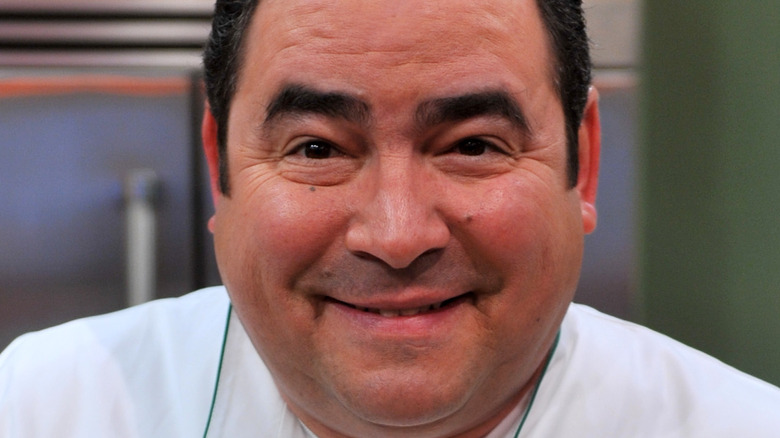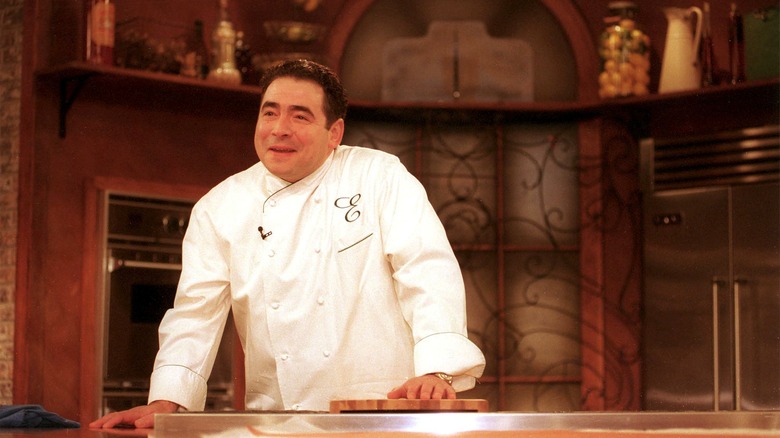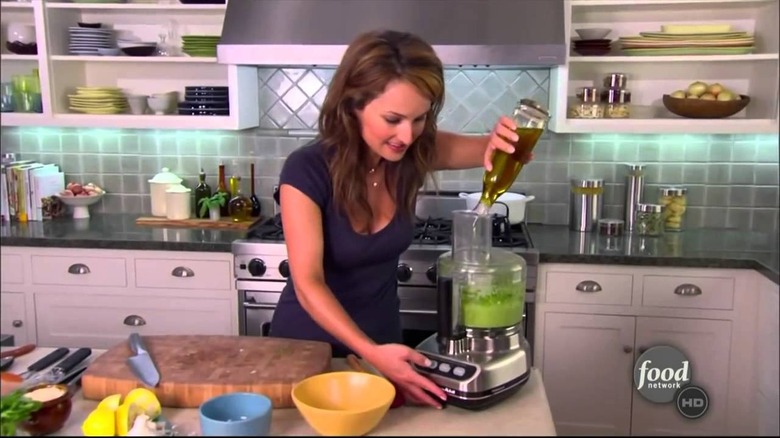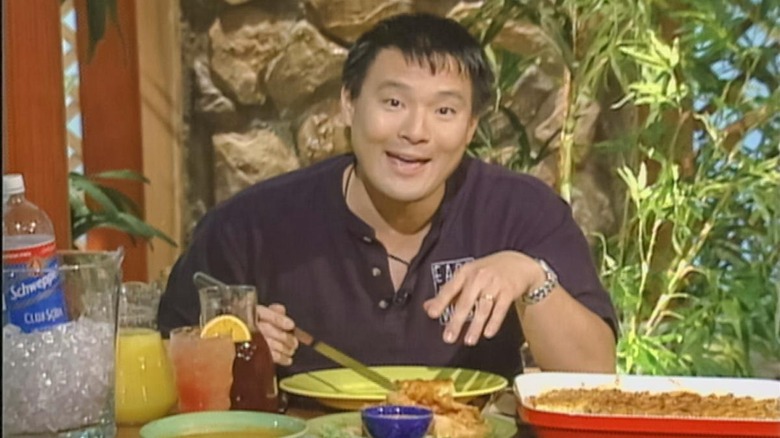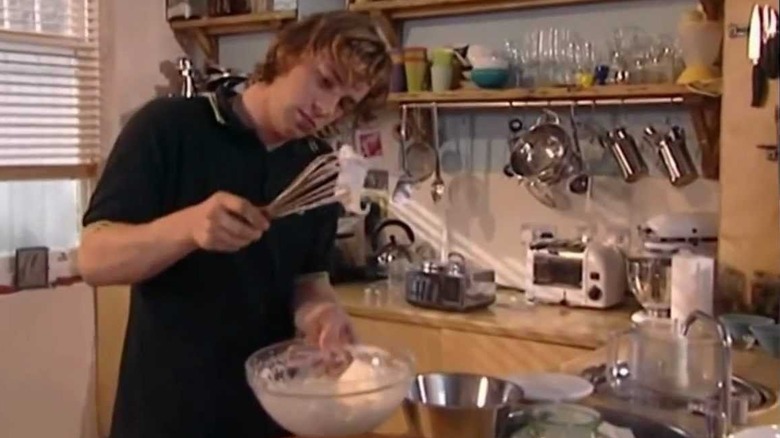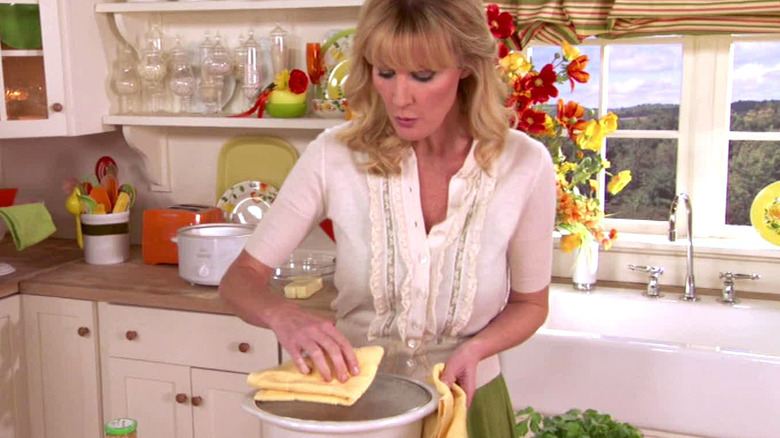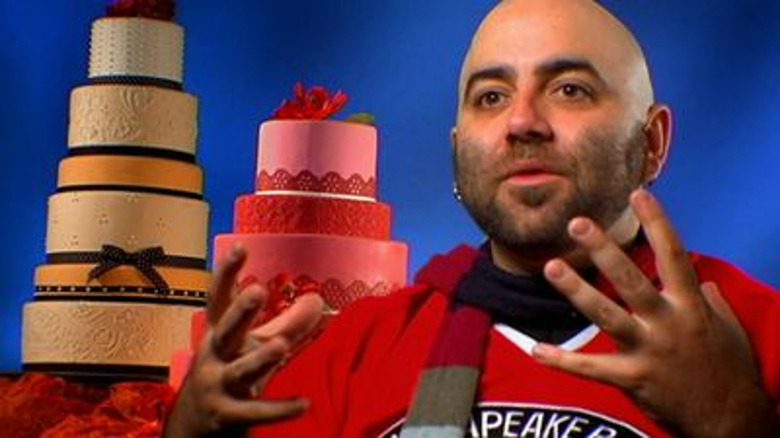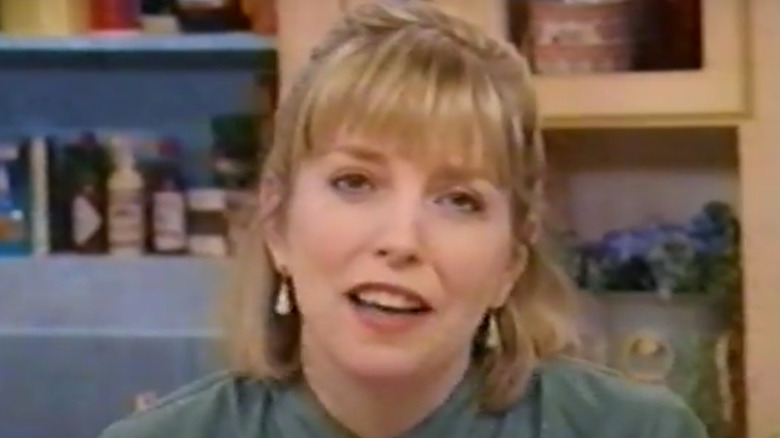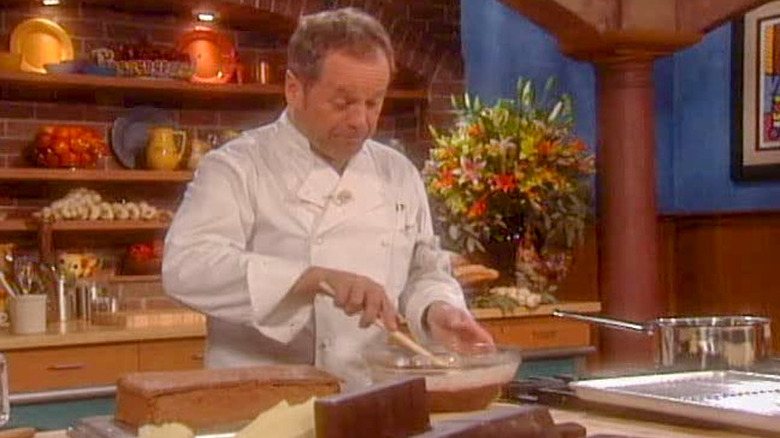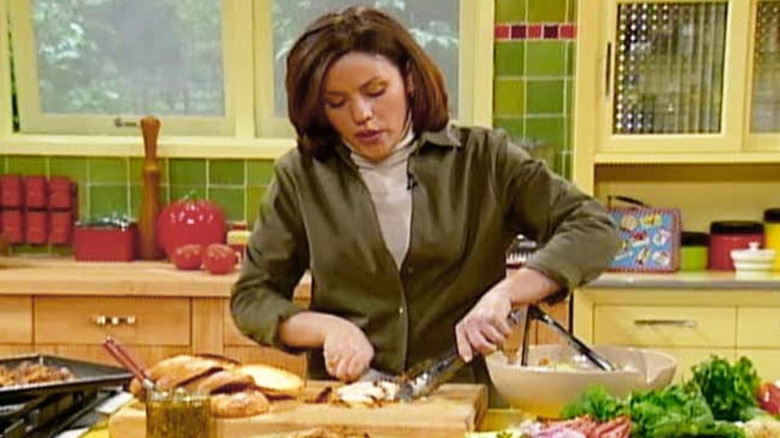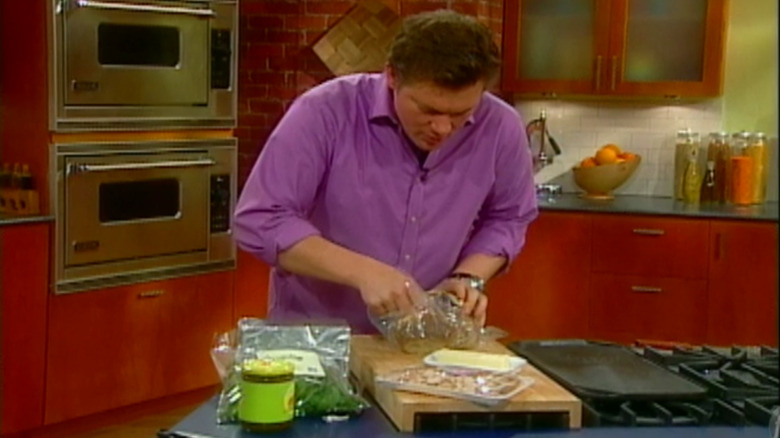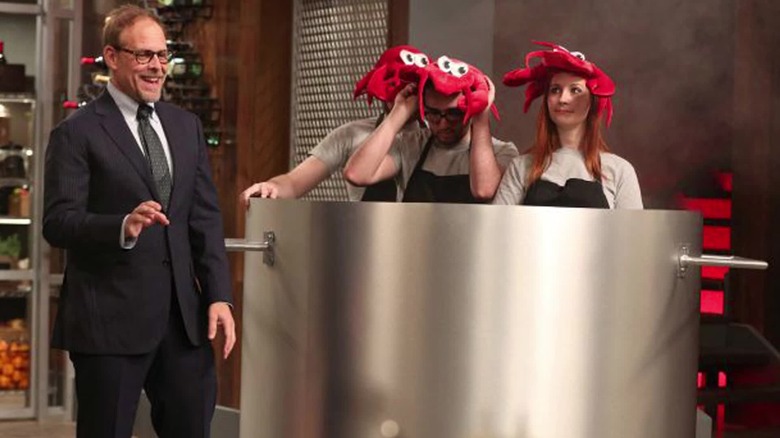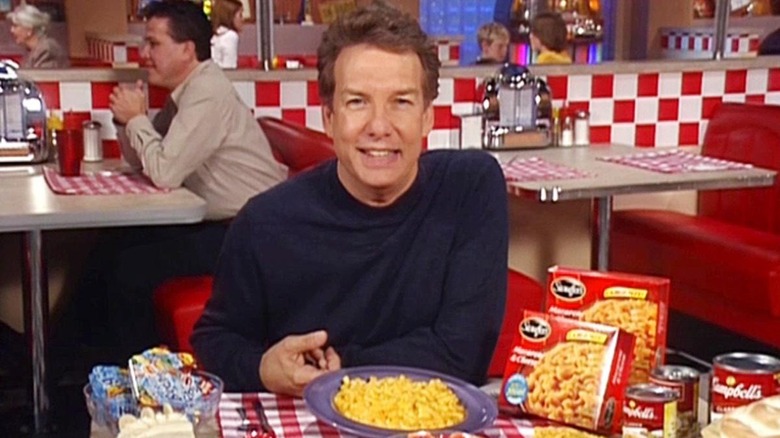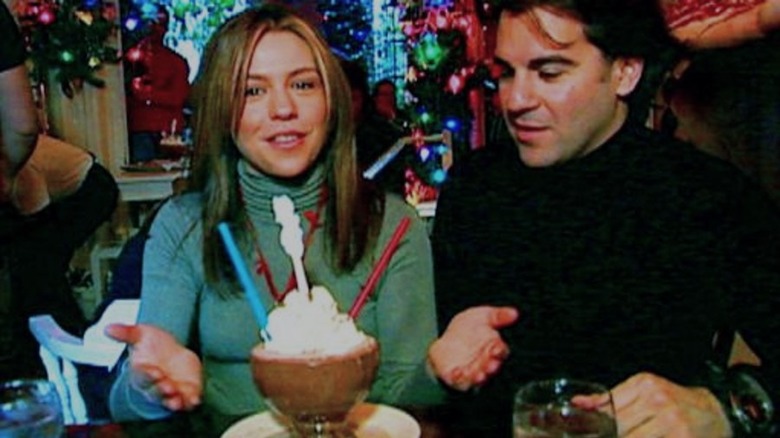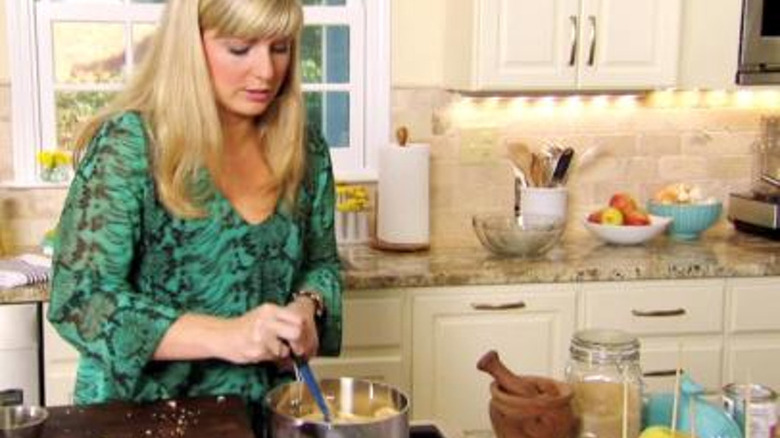The Top 15 Food Network Shows We Miss The Most
When Food Network launched in 1993, not everyone was so sure that a network with 24-hour food programming would be a hit, but seemingly against all odds, fans loved it. Today, Food Network is distributed to almost 100 million homes in the United States, according to its website. And that doesn't even include visitors to said website and subscribers to the Food Network magazine.
Over the past 20 years of Food Network, we've been treated to some of the best (and worst) cooking shows and cooking competitions around. For many of us, Food Network shows have been a staple of our childhoods, teen years, and adulthoods, creating multiple generations of foodies who want to know as much as possible about how their food is made and by whom. But it seems that all good things must come to an end, so many of our absolute favorite shows have gotten the axe, whether formally or informally, over the years. Here are the Food Network shows we miss the most.
Emeril Live
You can't talk about Food Network without mentioning "Emeril Live." Though it wasn't his first Food Network show, "Emeril Live" gave us the Emeril Lagasse we all came to know and love — loud, animated, seemingly unpredictable, and also a great chef. "Emeril Live" was filmed in front of a live studio audience and featured Lagasse's cooking, humor, and a band helmed by percussionist Leonard "Doc" Gibbs. Lagasse's signature "Bam!" was a staple, as well as running gags like pulling the knobs off his stove and adding more than a little garlic and booze to recipes to whoops and applause from the audience. It was peak entertainment for a decade, but eventually, viewers (network execs) wanted something different.
While the network pivoted to reality television and wanted Lagasse along for the ride, Lagasse decided it wasn't for him. "I'm old-fashioned, and I want to teach people how to cook, how to eat, how to serve, how to shop, how to drink wine, how to mix a cocktail properly," he told GQ in 2016. "I didn't necessarily at the time want to get into this competition stuff." So in 2007, Food Network said goodbye to "Emeril Live," leaving a Lagasse-shaped hole in all our hearts.
Everyday Italian
Giada De Laurentiis may seem like a television veteran these days, but when she was discovered by a Food Network executive and offered "Everyday Italian," she had never been on television before. The Italian-born chef and food writer ultimately won viewers over not only with her bubbly personality but with her authentic yet updated take on the dishes she grew up eating in Rome. What set the show apart from other shows at the time is that it wasn't shot in a studio. De Laurentiis told Food & Wine in a 2016 interview that because she didn't want to leave LA and her husband and kids behind, Food Network rented a house for the show. De Laurentiis shared that "it gave the show a warm, homey feeling, and I could bring my family and friends in and do fun entertaining on the show." That warm, homey feeling is exactly what Food Network viewers wanted and many of the network's cooking shows have followed suit ever since.
The last episode of "Everyday Italian" aired in 2008, and De Laurentiis pivoted to hosting other Food Network shows, including "Giada At Home" and "Giada in Italy" to name just a few. Still, they'll never replicate that early magic of "Everyday Italian."
East Meets West
"East Meets West" hit the air in 1998, hosted by Chinese-American Chef Ming Tsai, who was one of the few Asian chefs on television at the time. In each episode, Tsai taught viewers how to cook what some have called Asian-European fusion cuisine, but it's not a term Tsai particularly likes. He told FamilyFarmed (now The Good Food Catalyst), "I hate the term fusion cuisine, because food is a blending of technique and flavors. Fusion is forced atoms together to make nuclear energy. However, I would go out and say that everyone on this stage, and every top chef in the country is doing their own version of fusion ... But I would also say no one up here or anywhere is inventing a cuisine."
Whether he (or anyone else) created a new cuisine or not, Tsai's accessible recipes allowed people who had never cooked with Asian ingredients to develop comfort with the flavors and textures until 2003 when Tsai and Food Network parted ways. Tsai told FamilyFarmed that "Food Network became all about competition," but he still wanted to teach. Food Network's loss was public television's gain. Ming began hosting the long-running "Simply Ming" on WGBH-TV out of Boston, which is distributed throughout the United States on PBS.
The Naked Chef
Admit it, if you're of a certain age you saw a show called "The Naked Chef" scroll across your TV Guide Channel at some point and couldn't resist flipping over to Food Network to see what the heck that was all about. No, you soon discovered, Chef Jamie Oliver wasn't naked, but the show's title instead described his cooking. Originally airing on BBC 2 in the UK before airing on Food Network in the United States, "The Naked Chef" featured easy recipes with just a few ingredients that anyone could make in their London flat (or wherever they happened to live). It was a springboard for Oliver but was canceled by the BBC in 2001 and contract negotiations for a different show featuring Oliver reportedly broke down.
Oliver made the move from BBC to Channel 4, and his show "Jamie at Home" made its way to Food Network in 2008. Don't get us wrong — "Jamie at Home," which ran for two seasons, captured some of the simplicity of "The Naked Chef," but the magic of a 20-something British man cooking in his apartment was lost.
Semi-Homemade Cooking with Sandra Lee
Cookbook author and chef Sandra Lee made a name for herself with her "semi-homemade" style of cooking, combining 70% store-bought ingredients with 30% fresh ingredients for something that tastes homemade but takes a fraction of the time. That's exactly what working moms everywhere were after when Lee's "Semi-Homemade Cooking" debuted on Food Network in 2003. Though not everyone was a fan of Lee's style of cooking — Anthony Bourdain famously said it would cause a "swath of destruction through the world" — Lee hit a high note with viewers who, like her, were looking for ways to frugally and quickly get dinner on the table.
"Semi-Homemade Cooking" aired on Food Network for 15 seasons, but it was during the COVID-19 lockdown of 2020 that Lee's show and recipes came to the forefront of people's minds again, even those who had previously thought her a joke. Samin Nosrat, the author of "Salt Fat Acid Heat," told The New York Times in 2020, "I'm first to admit, I always denigrated that style of cooking. But I have to say, doing everything from scratch in these circumstances is bananas."
Sure, Food Network offered up some quarantine specials during lockdown, but we sure are missing "Semi-Homemade Cooking" on Food Network these days.
Ace of Cakes
Though you've no doubt seen Duff Goldman all over Food Network as a judge on competition shows like Kids Baking Championship, Holiday Baking Championship, Spring Baking Championship (you get the picture), Goldman got his start on the network as the "Ace of Cakes" at his Baltimore cake shop Charm City Cakes in 2006. Each week on the show, Goldman and his team of bakers and cake decorators worked to fulfill impressive and sometimes audacious cake orders, highlighting intricate cake builds and over-the-top decorating that the average Food Network viewer hadn't seen before. The cakes, and the talent of Goldman and his team, were truly impressive and kept viewers tuning in each week to see how the team would make something even bigger and more mind-blowing the next week.
After five years of showcasing gravity-defying cakes, the industry caught up with Goldman and his team. Bakeries all around the country were implementing similar artistic creations with their cakes, and while Goldman and his team still have unmatched talent — as witnessed in recent shows like "Buddy vs. Duff" — the magic of the show just wasn't there anymore. Goldman truly set the standard for baking and decorating, making it no wonder he's the go-to baking judge on the network today.
Cooking Live with Sara Moulton
Lots of cooking shows on Food Network and elsewhere make copious claims about easy recipes you can make on your own in a short amount of time, but only "Cooking Live with Sara Moulton" actually showed someone cooking food on the fly while answering calls from viewers. There's something so genuine about watching someone cook while multitasking that resonates with everyone who has ever tried to cook a meal while juggling kids, pets, work obligations, and everything else life throws at us on a daily basis. Despite the fact that Moulton revealed in an interview with WGBH that she thought she was terrible in her screen test and that it was so stressful her hands "never stopped shaking," fans loved the show, which was one of Food Network's earliest, debuting in 1997 and running until 2002.
At that time, Moulton began hosting "Sara's Secrets," which was also geared toward folks with busy lives and was great in its own right, but which never quite captured what "Cooking Live" had brought to the network.
Wolfgang Puck's Cooking Class
There's learning to cook and there's learning to cook from a master in what feels like a private cooking class. "Wolfgang Puck's Cooking Class" took a different approach from many of the shows on the air at the same time when it came to educating viewers on how to cook. Rather than cooking an entire meal and just touching on the preparation, each episode of "Cooking Class" went in-depth on the technique of one thing, whether that one thing was cooking eggs, grilling, cooking whole fish, or mastering butterflying fish and chicken, to name just a few.
Though it only aired for two seasons from 2005 to 2006, the variety of techniques and dishes featured on the show ensured that viewers were armed with a whole repertoire of recipes to try on their own. With so few shows on Food Network these days really highlighting technique and step-by-step instructions, "Wolfgang Puck's Cooking Class" is sorely missed.
The Best Thing I Ever Ate
While early programming on Food Network was all about cooking, the network's programming has branched out to be more all-encompassing about food in more recent years. Just look at the success of Guy Fieri's "Diners, Drive-Ins and Dives" and you'll see that Food Network fans not only want to know how to prepare food — they also want to know where to go to get the best food when they're going out to eat. "The Best Thing I Ever Ate" was the perfect combination of Food Network personalities and highlighting great food. In each episode, Food Network stars shared their absolute favorite dishes that, in theory, you could spend your hard-earned money on as well. Whether you planned to actually go out and get the same meal described on the show, there's something so great about hearing someone who has made food and cooking their life describe the best thing they've ever eaten.
Lucky for all of us, after Food Network canceled "The Best Thing I Ever Ate" it was picked up by the Cooking Channel, but you'll need either cable or a Discovery+ subscription to see it.
30 Minute Meals
Food Network viewers were introduced to cook Rachael Ray in 2001 when her show "30 Minute Meals" (based on her 1999 book of the same name) premiered. Though she'd taught cooking classes and had a spot on the "Today" show, "30 Minute Meals" was Ray's first standalone cooking show. Her approach was down-to-earth and she shared comforting, quick recipes that her own family loved. She also used casual vernacular and catchphrases that have become synonymous with her name, introducing many viewers to the shorthand EVOO for extra-virgin olive oil as well as terms like "sammies" for sandwiches and "delish" as a shortened form of delicious.
The show's original run lasted for 11 years, ending in 2012 a full six years into her eponymous talk show. Despite cooking segments on her talk show, fans missed the 30-minute format so much that Ray announced on her Instagram in 2019 that the show was being revived. Food Network revived it for a 30-episode arc along with a full collection of all the featured recipes, but with her talk show ending after 17 seasons in 2023, we can only hope to see more 30-minute meals in our future.
How to Boil Water
Taking it all the way back to the early days of Food Network, "How to Boil Water" was the quintessential cooking show for true beginners. It was Food Network's flagship show, originally hosted by Emeril Lagasse when it premiered in 1993. In each show, Lagasse taught viewers at home how to prepare dishes that would impress, even with little to no cooking experience.
After Lagasse's popularity surged on the Food Network and he moved on to "Essence of Emeril" and "Emeril Live" the beginner-focused show went through a few more hosts and formats before settling in with host and chef Tyler Florence teaching kitchen novice Jack Hourigan how to cook in each episode. The show simply stopped airing shortly after Florence took the helm, likely another victim of Food Network's pivot to competition programming, leaving us with only the recipes linked on the show's Food Network page to console us.
Cutthroat Kitchen
When it comes to the long-running cooking competition "Cutthroat Kitchen" hosted by Alton Brown, you either loved its shenanigans or hated it. The show pitted four chefs against each other in a series of three rounds during which the chefs could bid any part of their allotted $25,000 on ways to sabotage their fellow contestants. After a celebrity chef judged each round and sent one chef packing, the last chef standing went home with however much of the $25,000 they still hadn't spent. It ran for 15 seasons from 2013 to 2017, and if that sounds like a hectic filming schedule, you're right.
In a since-deleted Facebook live video, Brown revealed that he'd had enough of hosting "Cutthroat Kitchen." Brown announced on Twitter in 2018 that "Cutthroat Kitchen" had been canceled with the hashtag #probablymyfault, leading fans to speculate that the show was canceled once Brown told the network he was leaving. Sure, the show wasn't everyone's cup of tea, but it introduced us to many up-and-coming chefs that have since become celebrity chefs in their own right, and gave us the opportunity to wonder what we would do if forced to cook a lobster dinner while inside a giant lobster pot. Where else can you get that kind of entertainment?
Unwrapped
In 2001, every '90s kid's favorite game show host Marc Summers found a new gig hosting "Unwrapped" on the Food Network. Unlike much of Food Network's programming at the time, "Unwrapped" wasn't a cooking demonstration show, but instead a show about how different types of foods, especially packaged foods, are made. It was a fascinating look into the steps that go into creating and marketing food from the very first episode about bubble gum. Summers offered up historical tidbits while taking viewers behind the scenes at factories, fast food restaurants, and more. For many viewers, it was the first time they really stopped to consider where their food was coming from and how it was made.
The original series wrapped in 2011 after 22 seasons, but the show was revived as "Unwrapped 2.0" with "The Fresh Prince of Bel-Air" star Alfonso Ribeiro in 2015. The revival show only lasted three seasons (one on Food Network and two on the Cooking Channel) before getting the ax, proving that it wasn't just the food facts fans missed, it was the host as well.
$40 a Day
With the success of Rachael Ray's "30 Minute Meals" a year prior, Ray's second Food Network show "$40 a Day" premiered in 2002. The premise of the show had Ray visiting various cities, both in the United States and internationally, and eating breakfast, lunch, and dinner for just $40 a day. The show found Ray talking to locals to find the best inexpensive hidden gems in each city to help her stretch her budget. Sometimes she was so successful she was able to add some sort of treat to the day, whether a snack, dessert, or cocktail. Other times, she skimped on gratuity (which caused a bit of a backlash on some occasions) to hit her mark.
Eventually, "$40 a Day" was replaced with "Rachael Ray's Tasty Travels," in which Ray continued traveling and sharing tips with viewers about how to eat on a budget, but the $40 limit was gone (and we hope that means her tipping was a bit more appropriate). Still, there was something exciting about seeing someone eat three meals a day in a city we might like to visit someday and doing it for less than $40.
Southern at Heart
While Food Network began pivoting to competition shows in the early 2000s, one competition show in particular had an interesting prize: the winner of "Food Network Star" (originally called "The Next Food Network Star") received their own cooking show on the Food Network. Season 9 winner of "Food Network Star" was Damaris Phillips, whose resulting show was called "Southern at Heart." The show featured Phillips creating what she called modern Southern food and included recipes for everything ranging from game day favorites and movie snacks to holiday meals and a Southern take on Italian food.
Phillips and her friends, who were often featured on the show, felt like the kind of people you could be friends with yourself and the recipes were approachable and looked delicious. After five seasons, however, the show ended, leaving Phillips to mostly serve as a guest judge on other Food Network competition shows, "Guy's Grocery Games" in particular. While Phillips leads a very different life these days since marrying a vegetarian and transitioning to a completely meat-free household, we certainly wouldn't mind seeing her take on vegetarian Southern food should her show ever get its well-deserved reboot.
